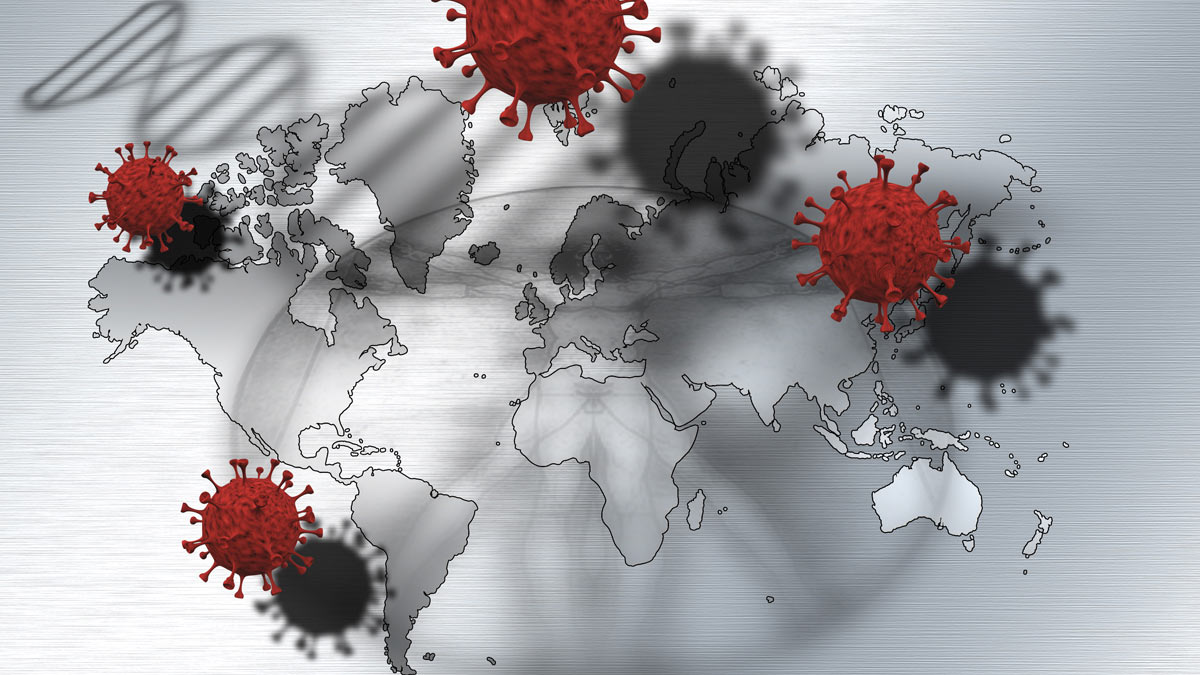In the past year-and-a-half, COVID-19 has affected virtually every aspect of American life. More than 33 million people contracted the virus and nearly 600,000 died. The U.S. economy took a major hit, with unemployment remaining a major problem, untold numbers of businesses either gone or struggling to remain viable and entire industries contemplating the possibility of never fully recovering from the devastation wrought by the deadly pandemic.
There is, however, a silver lining to the ominous cloud that has threatened the United States and just about every other country since early 2020. Despite the myriad medically-related and economic issues that made life both dangerous and miserable, the world probably will emerge from the pandemic healthier, wiser and better prepared to battle similar issues in the future.
“We’ve learned how to adapt, pivot and shift and about the importance of washing our hands frequently and wearing masks,” said Kay Durst, M.D., a family medicine specialist on Sullivan’s Island. “These things help with COVID and with other diseases.”
She added that the pandemic revealed to the general public how hard doctors, nurses and other health care professionals work to keep the public safe and also enhanced the use of technology such as Zoom and telehealth.
Another ray of sun in a generally dark sky, according to Lee Biggs, M.D., chief medical officer at Trident Health, is that during the pandemic, the five major health systems in the Lowcountry worked together to make sure local residents received the best health care possible. He said Trident, Roper, the Medical University of South Carolina, East Cooper Medical Center and the Veterans Administration joined forces “to make sure services were appropriate and available for the community.”
“We’re competitors in the marketplace, but, at the end of the day, we are stewards of medical resources,” he said. “We shared resources, and that’s a positive. We all can take heart in that teamwork.”
Dr. Biggs added that from a national perspective, researchers in the United States were able to produce a COVID-19 vaccine in a span of only 10 months.
“The world in general should sit back and say that’s amazing to be able to do that,” he commented.
Both Dr. Durst and Dr. Biggs agreed that frequent hand washing, social distancing and wearing masks were helpful not only to stem the spread of COVID-19 but also to keep the flu in check during the past year and that masks will continue to be common, at least in health care settings, for a while. The other precautions probably should remain as well, Dr. Durst said.
“I think people should continue washing their hands all the time,” she commented. “The two things that have saved the most lives in the history of medicine are hand washing and vaccines. Most bacteria and viruses are transmitted through droplets and touching. Washing your hands frequently will help.”
She added that even though people might be a bit wary of hugging and shaking hands, these interactions are consequential.
“Touch is healing and that’s important,” she said.
Dr. Durst and Dr. Biggs agreed concerning another important lesson people learned during the pandemic: Staying home is a good idea if you’re not feeling well.
“Maybe you shouldn’t go to a meeting or out to see friends if you have a runny nose,” Dr. Durst commented, and Dr. Biggs pointed out that a good way to fight the spread of the flu would be to follow the same regimen health care professionals preached during the pandemic: washing your hands frequently and masking, social distancing and staying home from work when you don’t feel 100%.
Dr. Biggs is optimistic that the COVID-19 pandemic will teach people a valuable lesson about another issue. He said historically, fewer than 40% of the population gets a flu vaccine every year, “an incredibly low number.”
“I hope it will be maybe 60%,” he said, adding that next year’s flu vaccine will offer some immunity against COVID-19. “We are going to have to hedge our bets and make sure there’s some COVID-19 defense in that seasonal flu vaccine.”
Telehealth became an important part of the health care toolbox during the pandemic and “a wonderful extension of what we can have,” according to Dr. Durst. The technology might be here to stay, Dr. Biggs said, but it can’t take the place of a critical aspect of health care.
“People embraced it because they didn’t have any other choice. Telehealth will never replace the reassurance of being in a room with your doctor and feeling like you had a thorough examination. If you are a surgeon or in a procedural-related specialty, nothing will ever replace building a relationship with your patients. Telehealth is only to get us so far in unique situations like we saw during COVID-19,” Dr. Biggs said.
“There are times when you need to see a physician personally, where we can examine the patient physically, which is still very important and a clinical art,” Dr. Durst concluded.







